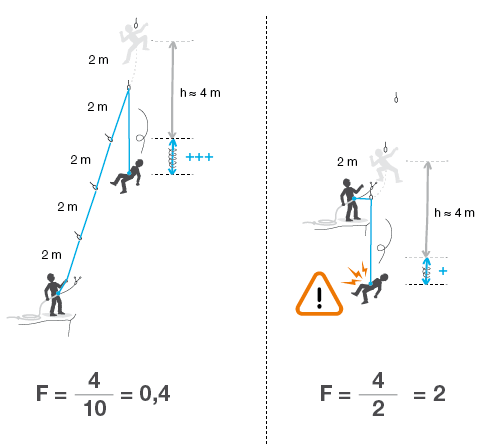Impact Forces of Rock Climbing
There are, of course, dangers associated with rock climbing, falling being the largest. The impact force is the force experienced by the rock climber in a fall as the energy is converted into kinetic energy and thermal and sound energy.
The ropes designed for rock climbing are lightweight, thin and dynamic, meaning they stretch, this stretching lengthens the time of the fall thus allowing a falling climber to experience less force at once and prevent injury/death.
The fall factor is a term used to describe how dangerous a fall is from 0-2.
To find the fall factor you take the length of the fall height and divided that number by the length of the rope between the belayer and the climber. In the image below on the left the total length of the rope is fairly large compared to the climber fall height, thus the fall factor is relatively low. In the image on the bottom right the fall height is large compared to the length of the rope, thus the fall factor is large.

Image 6
FUN FACT: The height of the fall can be very large, and yet with a large enough rope, the fall factor can still remain a low number.